A Bright Future for Trade Finance
by Dan Scanlan
Published on April 26, 2019
I remember as if it were yesterday. I was sitting in my office doing what countless others were probably doing at the time: I was on a conference call. This call was with ten or twelve BAFT members representing their respective banks listening to a presentation from a company whose name I can no longer recall. They were telling us how they were going to be the first ones to do the equivalent in Trade Finance of boiling the ocean. It wasn’t easy to pay attention after they described how they were in the process of negotiating with all the major shipping companies, the key governments from the WTO, the major insurance companies, most of the fortune 500, a number of freight forwarders and on and on and on.
What were they negotiating, you ask? They were attempting to devise standards for mapping all the pertinent data related to a trade transaction. Their idea was nothing less than the complete automation of trade transactions. Their theory went like this: No matter the type of transaction, a letter of credit, a documentary collection, an open account transaction, once we have agreed on the data standards for all the potential documents in a trade transaction we will be able to have the machines take over (think of Hal in 2001 Space Odyssey… “Are you comfortable Dave?”) . All the data would be sent electronically to the banks and it would be easy peasy for the banks’ systems to take that data, do automatic checking of the documents against the L/C, compare the data in the doc collection or compare the P.O. to the invoice in the case of an open account transaction. Viola! All trade processing is automated! Nirvana reached; we can all go home!!!
All of us on the call knew that getting all the potential players in trade transactions to agree on data standards would never happen. Easier to boil the ocean, right? But today there is a way to create the same affect without all the fuss. TradeSun has invented a way to capture all this divergent data through intelligent scanning and machine learning so that they are indifferent to the format of the documents. An ‘anything goes’ approach to automation. TradeSun’s technology has eliminated the need for standardization because it captures the pertinent data regardless of where it sits in the documents.
Over the years many companies and banks have tried to automate trade processing. Some tried the data standardization approach (think Bolero). Others tried the simplification approach. Once when I was running trade operations at a major West Coast bank my boss, a very bright lady, came to me and asked me, in so many words, to invent a simplified L/C. Her view was that the L/C process was too complicated and we could significantly cut the cost of processing if we could just make it more simple. Well the bad news is I failed to invent the simplified commercial L/C; but the good news is that she didn’t fire me. In my defense I believe that the reason banks have not significantly simplified the L/C is that by even thinking that way we have committed a major marketing faux pas. We have failed to listen to our clients.
As Kirk Lundburg, the CEO of Trade Technologies, recently said, “Contracts between importers and exporters are not simple or standardized because trade is complex. For trade to happen, agreements must be reached across legal systems, cultures and languages for an infinite number of parties, products and services. These agreements cannot be made, and trade cannot happen, without trust, experience and nuance. Creating a simplified, minimized or digitized transaction format makes banks happy because it is cheap and easy to process, but if it fails to support the complexity required to complete trade transactions, what good is it? Instead of dumbing down trade payments, tomorrow’s trade finance solutions will be rigorous and flexible enough to support exporters and importers in the complex environment where global trade happens.”
Lundburg is definitely on to something, and I’m proud to say that I’m part of this new solution, as I’ve recently joined TradeSun. With TradeSun, instead of making everyone conform to globally agreed upon standards (the impossible dream), we start with the documents themselves. Whether it’s an invoice, a SWIFT formatted L/C, an inspection cert, an insurance certificate, a B/L from a major shipping company… Whether it’s the carbon copy of the airway bill from a package delivery company, some rarely heard of freight forwarder, or that rare case of an onion skin document still smelling of curry, it doesn’t matter. Our software uses AI and machine learning that can read those documents. Is it 100% accurate the first time through? No, but it starts around 80% and quickly (with the help of a knowledge worker (read: bank document checker)) and the system’s AI capabilities, it jumps to a near perfect accuracy range.
“A miracle,” you say? No, not a miracle, but a proven technology from TradeSun. This small but powerful company has created this technology that uses image recognitionand natural language processing to read and automatically create document templates that replicate every document it sees. That means that the next time it sees that document, bingo! There’s a match. And any time it sees a close approximation it presents that document and its data to our friend ‘the knowledge worker’ who confirms or corrects the system, thereby solidifying TradeSun’s knowledge.
Imagine, a number of banks using this system every day, feeding their documents (i.e., scanning, uploading word or PDF docs, etc.) into TradeSun. Each of those banks has a secure space for their data while having the benefit of sharing the system learnings, so that when Bank A feeds a new doc into the system and the next day Bank B uploads a similar document, Bank B benefits from the system learning from Bank A and receives a template match thereby extracting all of the pertinent data. And therein lies one of the many beautiful components of the TradeSun system. It operates on the cloud and supports multi-tenancy and multi bank document learning. However, if you’d prefer to opt out of the multi bank learning or have an in-house version, that’s perfectly ok as well.
Once the system has all the correct data from the documents, the real magic begins. At the click of a button it compares all the data against the original L/C and any amendments. That comparison is displayed in a user friendly matrix, dubbed the “K Matrix” by the geniuses at TradeSun. The K Matrix shows the data comparison and highlights in green the matches; orange, the potential discrepancies; and in red, identified discrepancies. The document checker reviews the highlighted fields, makes a call on the orange and red fields and then completes the document exam. Ok, not quite Nirvana but pretty close and a lot easier than boiling the ocean. In fact some would argue that it’s a different way of boiling the ocean. Same effect, but without all the headaches associated with trying to reach universal agreement on data standards.
In addition to this automated checking process, the TradeSun technology has the ability to do a compliance check against either external or internal databases. So, yes, it can check the SDN list, the sanctions list, and any internal or other external list your bank may use. It can also be programed to review your red flags, i.e., things like under- or over-invoicing, dual use goods, etc. And the beauty is that it does all this in record time. TradeSun says that its technology can speed up the processing of letters of credit from 3 to 7 times.
The system is operating today in a major Asian bank after TradeSun won a global RFP against a half dozen competitor AI companies and although they are not willing to share their results publicly (contractual concerns) I have heard from a reliable third party that the bank in question is very happy with the results they are achieving and they are currently implementing the system globally.
Again, the beauty of this process is that the importers and exporters can continue to be as nuanced and detailed as they want; and the banks can significantly increase their margins in the business by adopting a fast and efficient technology that automates most of the process, speeds up the exporter’s cash conversion cycle and still leaves the banks in control of how they service their customers. Yes indeed, a way to boil the ocean without ever lighting a match. But don’t take my word for it, contact TradeSun and see for yourself.
Originally published on LinkedIn

